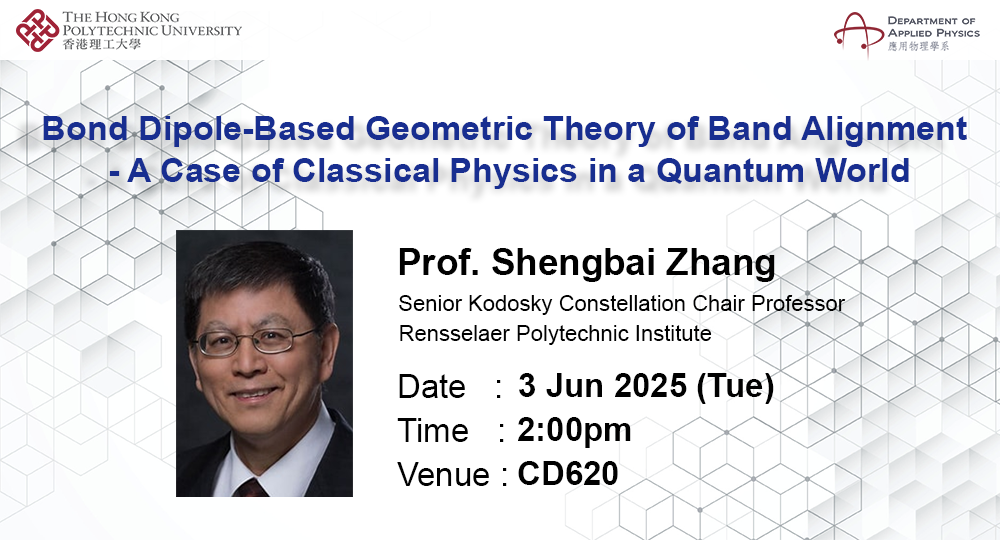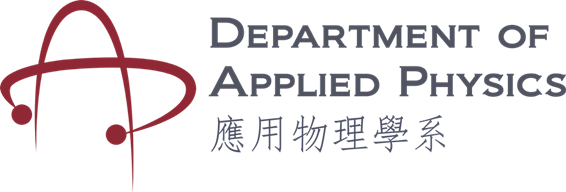AP Seminar - Bond Dipole-Based Geometric Theory of Band Alignment - A Case of Classical Physics in a Quantum World

-
Date
03 Jun 2025
-
Organiser
-
Time
14:00 - 15:00
-
Venue
CD620, 6/F, Wing CD, PolyU Map
Speaker
Prof. Shengbai Zhang
Summary
Study of band alignment is plagued by the lack of a common reference for periodic systems. Typically, average potential is used as the reference. One may truncate a bulk to expose the vacuum level [1]. However, with respect to such a level, the average potential is strongly orientation dependent [2]. This happens because the average potential is a projection of a nonintuitive bulk quadrupole tensor in the given direction [3]. By introducing Wigner-Seitz atoms (WSA), which are charge neutral, maintain local crystal symmetry, and tessellate space, one can however reduce the tensor to the expected scalar quantity, whereby setting the stage for a universal intrinsic band alignment [4]. The WSA approach further allows for an evaluation from classical electrostatics of the charge transfer at the interface, which manifests itself as the formation of (sometimes sizable) interfacial bond dipoles. In general, therefore, band alignment consists of two parts: (1) intrinsic contribution of bulk and (2) extrinsic contribution due to interfacial bond polarization. We discover that for interface between isotropic systems, the potential shift due to interface charge transfer is only a function of bulk crystal structure and strictly interface orientation independent in line with experiments [4].
References
- D.-H. Choe, D. West, S. Zhang, Phys. Rev. Lett. 121, 196802 (2018).
- L. Kleinman, Phys. Rev. B 24, 7412 (1981).
- D.-H. Choe, D. West, S. Zhang, Phys. Rev. B 103, 235202 (2021).
- Z. Jiang, D. West, and S. Zhang, Featured Article, Appl. Phys. Rev. 12, 011411 (2025).
Keynote Speaker
Prof. Shengbai Zhang
Senior Kodosky Constellation Chair Professor
Rensselaer Polytechnic Institute
Prof. Shengbai Zhang is Senior Kodosky Constellation Chair Professor at Rensselaer Polytechnic Institute. Zhang earned his bachelor’s degree from Jilin University in China and his master’s and doctorate in physics from the University of California at Berkeley. His research involves first-principles calculations, theory, and modeling of structural and electronic properties of condensed matter. Zhang is a pioneer in computation physics and materials science, renowned for his computational modeling and research in semiconductor defects. He is a fellow of the American Physical Society. He is also author and co-author of more than 400 peer-reviewed papers with 44,000 citations, as well as the winner of numerous awards.




